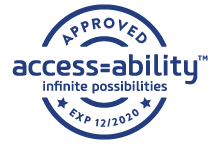by Daniel Parker, RDPFS Contributor:
Learning to get around a new area can be a real challenge for those with vision loss. Fortunately, a number of technological tools can make this process easier. One such innovation, ChatGPT 4o, developed by OpenAI, while not designed specifically for people who are visually impaired, has been dominant in the news cycle for over a year. Along with other similar chatbots, ChatGPT allows users to ask questions and prompt it to respond in certain ways. I recently asked this AI (Artificial Intelligence) tool to describe the street layout of my city, centered on an intersection near my home, and local shopping and dining locations. While some of its answers were less pertinent and others were slightly out of date, particularly regarding businesses that had recently closed, ChatGPT’s description of the street layout was helpful. It included compass directions, which are useful for making a mental map of an area in relation to a fixed point, and it gave information about nearby streets, their location in relation to the intersection, and what could be found on each street. I also requested the layout of a transportation system, specifically the Washington Metro. In response, ChatGPT gave the routes for all six Metro lines, including transfer hubs and notable stations for each, and accurately described a typical Metro station, including the location of the platforms.. Overall, generative AI is not a definitive resource, and the user must remember to double-check all of its answers. It is certainly no substitute for a trained orientation and mobility instructor or a dedicated turn-by-turn navigation app. However, when looking to learn the basics of an area or understand a map, AI tools could be a good first step. More information on what ChatGPT offers users with vision loss are available in resources like this video from Vision Forward’s Tech Connect, and an article from Top Tech Tidbits that provides tips on how people with vision loss can access ChatGPT.

